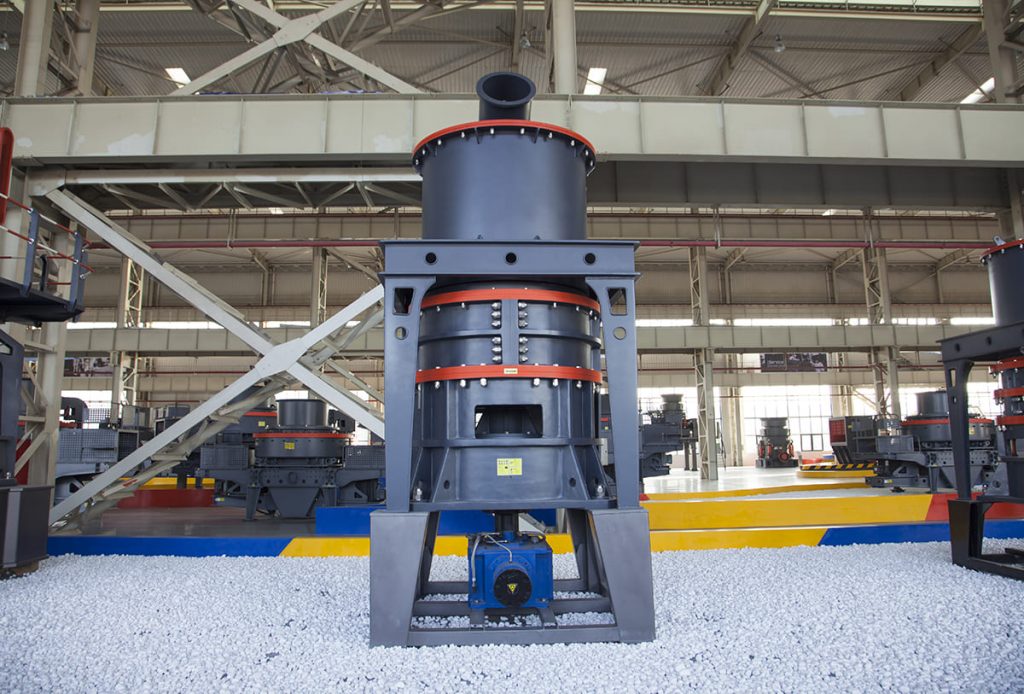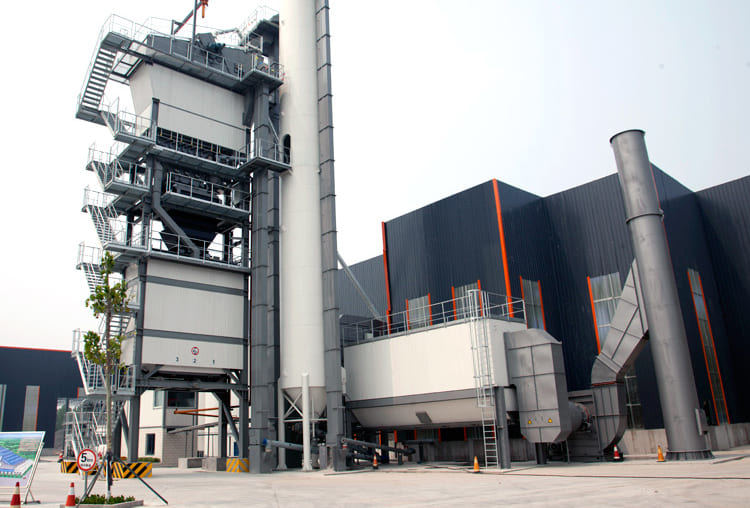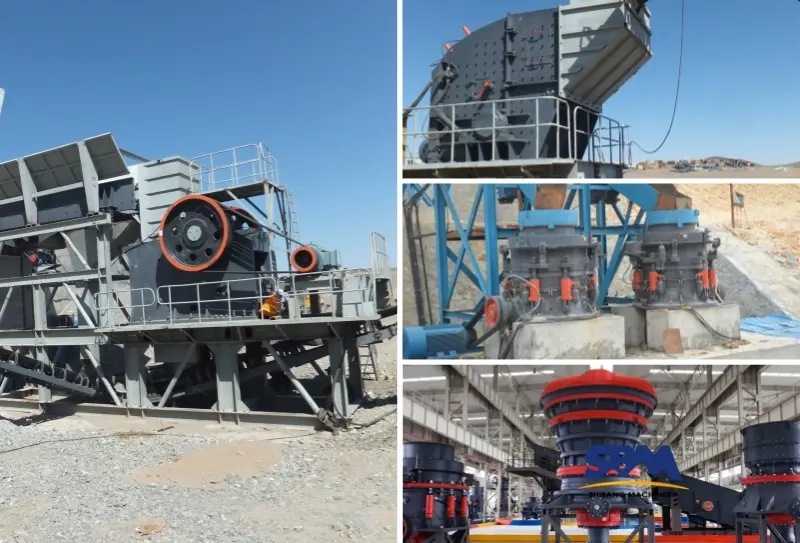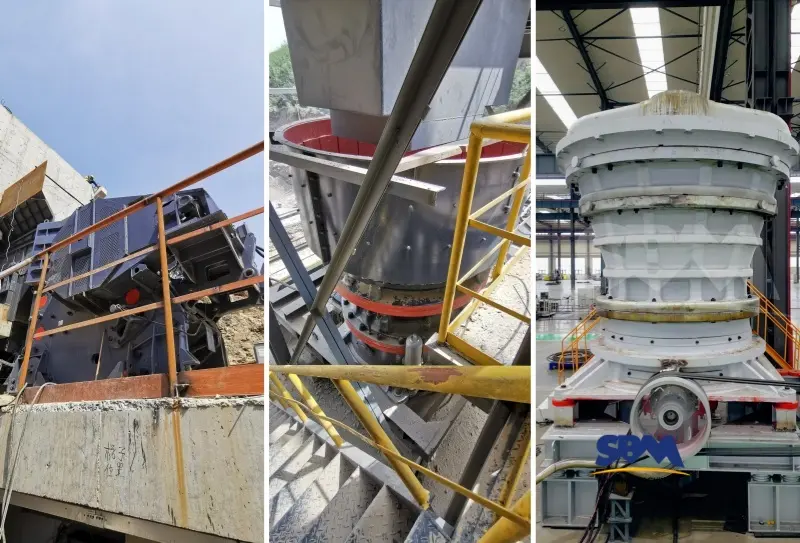E-pos: [email protected]
Wat is kalksteenmeul
'N kalksteenmeule is 'n masjien wat kalksteen maal en poeier. Dit is baie nuttig in die vervaardiging van sement, glas, staal en ander industriële produkte wat fyn grondkalksteen benodig. Kalksteen kom in die meule waar dit verwerk en verpletter word deur die media te slyp (balle of rollers). Skeiers versamel die resulterende poeiers, wat dikwels grondstowwe of bymiddels in verskillende bedrywe is. Kalksteenmeulfabrieke kom in verskillende groottes en ontwerpe voor, Maar hulle het altyd 'n draai -silinder of bak met slypmedium en 'n interne klassifiseerder of skeier om die deeltjiegrootteverspreiding van te reguleer die grond kalksteen.

Die verskillende soorte kalksteenmeulfabrieke beskikbaar
Daar is verskillende soorte kalksteenmeulens beskikbaar, elkeen ontwerp vir spesifieke doeleindes en toepassings.
Raymond Mill
Hierdie meul, Ook bekend as die Raymond Roller Mill, is 'n algemene keuse vir kalksteenmaal. Dit werk deur 'n slypring of rol om 'n vaste as te draai, waardeur die materiaal gemaal kan word deur die rol- en verpletterende werking tussen die slyponderdele.
Balmeule
'N Balmeule is 'n silindriese toestel wat gebruik word om materiale fyn te maal. Dit bestaan uit 'n horisontaal roterende drom. Slypmedia soos staalballe word in die trommel geïnstalleer. Hierdie slypmedia -impak en maal die kalksteen as die trommel draai.

Vertikale rolmeule (VRM)
Hierdie meule slyp en skei die kalksteen in verskillende deeltjiegroottes met behulp van verskillende rollers. In vergelyking met ander soorte meulens, Dit lewer effektiewe slyp met 'n kleiner voetspoor.
Hoë druk slypfabriek
Hierdie meul, Ook bekend as 'n HPGR -meule, gebruik hoë druk op die materiaal wat grond is, wat lei tot 'n fyner vermindering van deeltjiegrootte. Ons gebruik dit wyd vir kalksteenmaal in die mynbedryf.

Ultrafienmeule
Hierdie meule voer tipies ultra-fyn slyp van brosse minerale soos kalksteen uit. Dit beïnvloed en verpoeier die materiaal met behulp van sentrifugale krag om baie klein deeltjiegroottes te produseer.
Hamerfabriek
'N Hamerfabriek kan ook kalksteen in kleiner stukke verpletter, Alhoewel die primêre doel daarvan verpletterend is. Dit werk deur vinnig draai hamers wat die materiaal tref en dit in kleiner stukke in 'n kamer verpletter.
Dit is slegs 'n paar illustrasies van die verskillende soorte kalksteenmeulens wat toeganklik is. Die voorkeurdeeltjiegrootte, vereiste kapasiteit, energiedoeltreffendheid, en die unieke eienskappe van die kalksteen wat verwerk word, is almal belangrike oorwegings by die keuse van die regte meule.
Watter faktore moet oorweeg word by die aankoop van 'n kalksteenmeul?
Wanneer u 'n kalksteenmasjien koop, Ons moet verskeie belangrike faktore oorweeg om die beste prestasie en waarde vir ons spesifieke toepassing te verseker. Hier is 'n paar van die belangrikste faktore wat u moet oorweeg:

Kapasiteitsvereistes
Die kapasiteit van die slypmeule moet ooreenstem met die vereistes van ons onderneming vir produksie. Ons moet die hoeveelheid kalksteen wat verwerk moet word, in ag neem, die verwagte produksie en die produksietempo.
Deeltjiegrootte vereistes
Deeltjiegroottes wat nodig is vir verskillende bedrywe’ Voltooide goedere wissel. Ons moet die nodige deeltjiegrootteverspreiding kan bereik met behulp van die slypfabriek wat ons kies.
Energiedoeltreffendheid
Die energieverbruik van 'n slypmeule is 'n aansienlike lopende uitgawe, Die keuse van een wat energiedoeltreffend is, is dus van kardinale belang. Dit kan bedryfsuitgawes bespaar en volhoubaarheid verhoog.
Onderhoudsvereistes
Onderhoudskoste is nog 'n belangrike oorweging. Maak seker dat die vervangingsonderdele maklik toeganklik is by die keuse van 'n slypfabriek, En dit moet eenvoudig wees om te onderhou en te herstel.
Koste bereken
Benewens die langtermyn-bedryfsuitgawes, Ons moet ook die aanvanklike aankoopkoste van die meule oorweeg. Die keuse van 'n slypfabriek wat 'n gunstige balans tussen voorafkoste en bedryfskoste bied.
Handelsmerk reputasie
Kies 'n betroubare onderneming met 'n goeie rekord van die verskaffing van slypmeulens van die hoogste kaliber. Voordat u 'n aankoop doen, Soek verwysings, resensies, en getuienisse.
Aanpassingsopsies
Dink aan 'n slypmeule wat verander kan word om aan ons unieke vereistes te voldoen as ons aansoek sekere funksies of veranderings vra.
Ons kan die ideale kalksteenmeule kies vir ons unieke toepassing deur hierdie aspekte in ag te neem, om te verseker dat ons die optimale prestasie en opbrengs op ons belegging verkry.
Hoe om die werkverrigting en doeltreffendheid van 'n kalksteenmeule te optimaliseer?
Om die werkverrigting en doeltreffendheid van 'n kalksteenmeule te optimaliseer, Ons kan die volgende strategieë en tegnieke oorweeg:

Behoorlike toerustingkeuse
Maak seker dat ons 'n slypfabriek het wat die toepaslike grootte en tipe is vir die verwerking van kalksteen. Mill tipe (soos 'n balmeul, vertikale rolmeule, of Raymond Mill), kapasiteit, kragverbruik, En algehele doeltreffendheid is alles belangrike faktore om in ag te neem.
Optimaliseer meulparameters
Om die beste vertoning uit die meule te kry, verander sy bedryfsinstellings. Hierdie veranderlikes sluit die volgende in: Mill Speed, voedingsyfer, Grootte en verspreiding van die slypmedium, en slypdruk. Probeer verskeie parameters om die een te vind wat die ideale deeltjiegrootteverspreiding lewer terwyl u die minste hoeveelheid energie gebruik.
Optimaliseer voergrootte
Grootte die kalksteen -inset na die meul toepaslik. Slyp sal dikwels meer effektief wees as die voerdeeltjies kleiner en meer eenvormig is. Voordat u groter stukke kalksteen in die meule plaas, Dink daaraan om toerusting vooraf te gebruik om hul grootte te verminder.
Handhaaf konsekwente voedingsyfer
Maak seker dat die voedingsnelheid in die meule konstant en onder beheer is. Veranderings in die voedingsyfer kan 'n invloed hê op die effektiwiteit van die slypproses en lei tot ongelyke produkgehalte. Om die vloei van kalksteen in die meule te beheer, Neem in ag met die gebruik van voerders of ander masjinerie.
Optimaliseer slypmedia
Vir die meule, Kies die regte grootte en soort slypmedia (soos staalballe of keramiekkrale). Die regte medium sal die effektiwiteit van die slyp en laer energieverbruik verhoog. Om piekprestasie te handhaaf, Inspekteer en vervang verslete of beskadigde media gereeld.
Gereelde onderhoud
Implementeer 'n deeglike onderhoudskedule om die meule in 'n uitstekende werkende toestand te hou. Dit behels roetine -skoonmaak om opbou en obstruksies te voorkom wat die doeltreffendheid kan verlaag, Ondersoek en herstel van verslete dele, en smering van laers.
Monitor en beheerprosesveranderlikes
Gebruik prosesbeheerstelsels om belangrike parameters soos meultemperatuur op te spoor en te bestuur, Produk fynheid, en kragverbruik. Ons kan hierdie gegewens gebruik om slyp te verbeter en enige probleme wat die prestasie beïnvloed, te identifiseer.
Oorweeg outomatisering
Om die werking van die meule te verbeter, Implementeer outomatisering en nuutste beheertegnologieë. Gebaseer op data van sensors en analitiese instrumente, Hierdie stelsels kan meulinstellings intyds verander, Verbetering van konsekwentheid en doeltreffendheid.
Energie -doeltreffendheidsmaatreëls
Gebruik energiebesparende tegnieke, insluitend hoë-doeltreffendheidsmotors, Beter lugvloei en ventilasie, en minder onnodige meule -afsluitings. Deur energieverbruik te verminder, Daar sal 'n algehele toename in die doeltreffendheid van die slypproses wees.
Deurlopende verbetering en optimalisering
Bestudeer die slypmeule se funksionering op 'n gereelde basis en let op enige tekortkominge. Voer roetine -oudits uit, ondersoek data, en vergelyk resultate met bedryfsnorme om deurlopende optimalisering aan te moedig en groter vlakke van effektiwiteit en prestasie te bereik.
Hou in gedagte dat die besondere verbeterings sal verskil op grond van die soort en ontwerp van die slypfabriek wat ons gebruik. Vir meer gedetailleerde advies wat aan ons toerusting en bedryfsbehoeftes aangepas is, Gesels met die meulvervaardiger of prosesspesialiste.
Hoofkwartierkantoor
Whatsapp:+8615225176731
E-pos: [email protected]
Adres: Geen. 1688, Gaoke East Road, Pudong nuwe distrik, Sjanghai, Sjina.
Webwerf: https://www.mill-sbm.com/
Artikelinhoud
Onlangse plasings
- How Does Jaw Crusher VS. Other Primary Crushing Equipment?From Australia’s iron ore belts to Canada’s oil sands, jaw crusher and (or vs.) other primary crushing equipment determines operational success. While gyratory and impact crushers have niche roles, jaw…
- What are the limitations of a jaw crusher? – 'N uitgebreide gidsOvercoming the limitations of a jaw crusher is essential to maximize efficiency and avoid operating errors. The following will walk you through the key limitations of a jaw crusher and…
- Beyond Rocks: The Surprising Materials Jaw Crushers Can ProcessWhile “rock crusher” might conjure images of granite mountains, new jaw crushers process materials that would surprise even seasoned engineers. Let’s examine their true capabilities through global operational data and…



